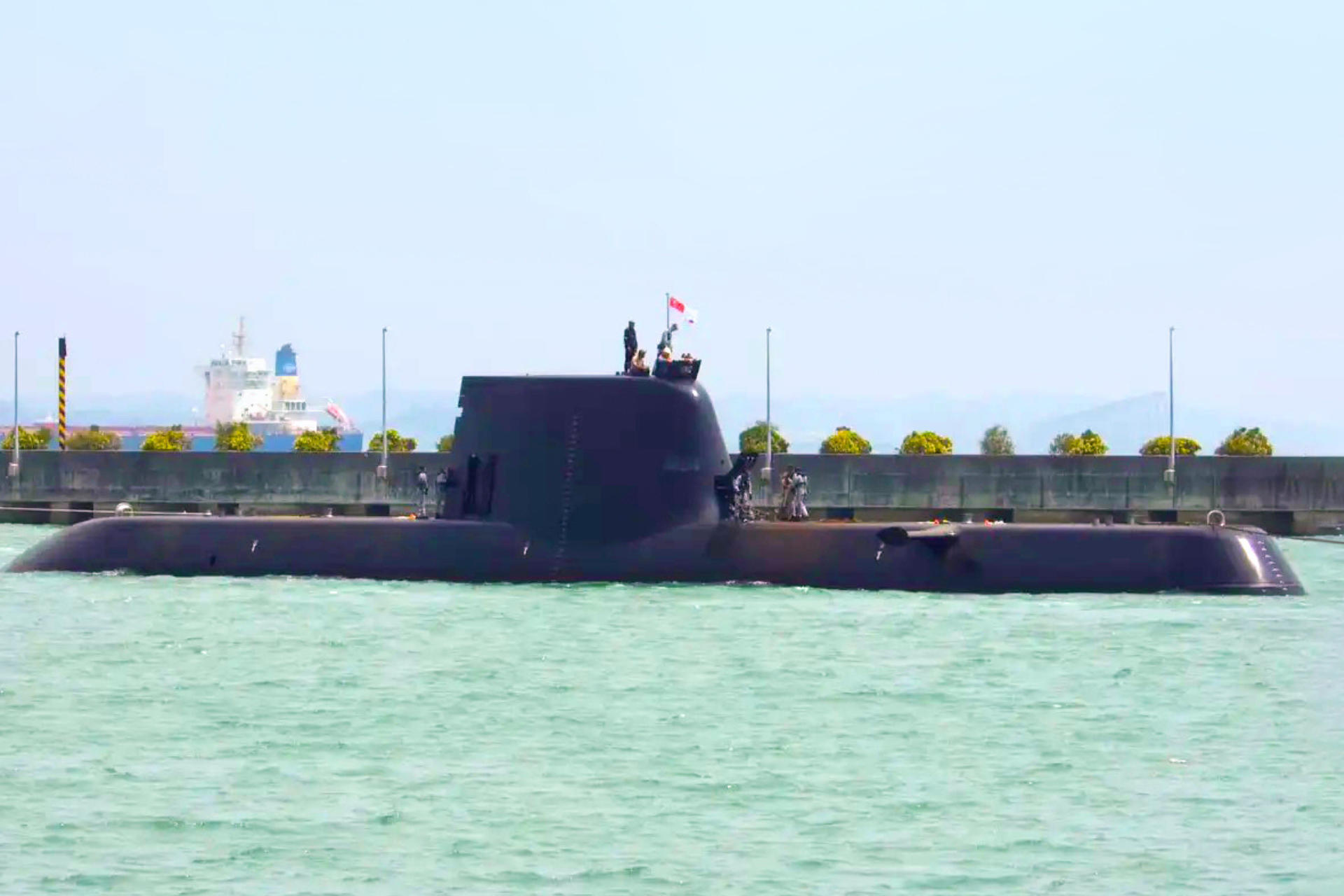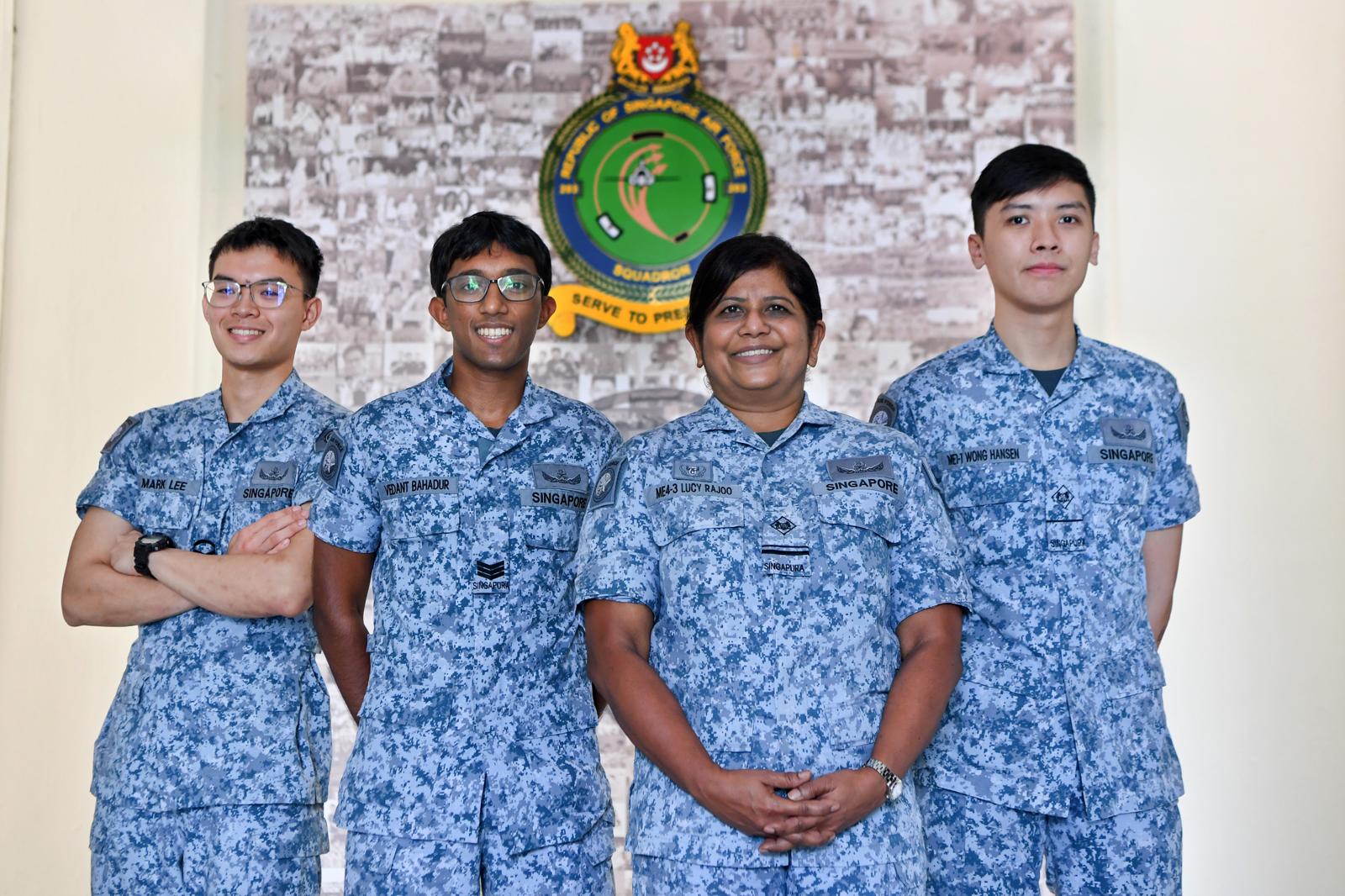EYES WITHIN THE WALLS
STORY // Tan Guan Wei
PHOTO // Chua Soon Lye
In today's increasingly urbanised world, the need for military surveillance in such environments has inevitably risen and DSO National Laboratories (DSO) has the solution in the form of the Gremlin Unmanned Aerial Vehicle (UAV).
Weighing less than 5kg and measuring 35cm high, the Gremlin UAV could easily be mistaken for one of those new-fangled vacuum cleaning robots that you set loose at home to do the dirty work.
While both excel in working within the confines of urban environments, that is where the similarities end as the Gremlin UAV is built for the purpose of military surveillance.
Imagine a scenario where hostages are being held within a building and rescue troopers have only one hour to save them. As the perpetrators are highly skilled, any rash decision would endanger the lives of not only the hostages, but those of the rescue troopers as well.
However, with the Gremlin UAV, the tide could be turned in the rescuers' favour. Because of its small size and active video feed, the Gremlin UAV is able to enter the building undetected and record footage and invaluable information, such as the precise location of the hostages in the building, for the troopers.
This would allow the troopers to make the right decisions in response to the situation within the building, hence increasing the chances of rescuing the hostages.
Efficient and compact
The Gremlin UAV is unique in two ways. First, it is a hybrid UAV that comprises a flight system and a ground module system, which means it can fly and hover in the air as well as travel on the ground.
Second, it utilises a co-axial system, where there are two rotors on a single shaft along the same axis, instead of the conventional quadrotor system, which uses four rotors.
The Gremlin UAV can fly into an opening of a building, such as through a window, and land inside. It can then be used to survey the building on wheels.
With a video camera attached to its bottom, the UAV can capture video footage wherever it goes. The footage captured allows soldiers to analyse the situation and decide on the appropriate response.
In the ground mode, the blades of the UAV are stored in a retracted position and are not exposed. As the UAV transits into flight mode, its two rotors would start spinning, thus extending the rotor blades and forming propeller blades.
Mr Timothy Tan, who was part of the six-man team from the Guided Systems Division in DSO that invented the machine, highlighted the advantage of this system: "The co-axial arrangement allows the UAV to have a very compact layout. If you compare this with a similar weight quadrotor system, which uses four rotors, you will realise that the UAV is at least three-quarters the size of the quadrotor system."
In flight mode, the UAV utilises a vertical take-off and landing (VTOL) mechanism, just like helicopters, where the spinning rotor blades would propel the UAV vertically upwards.
Future developments
The Gremlin UAV took the DSO team three years to complete: one and a half years to come up with the blueprint and design, and another one and a half years to build the machine. The team also consulted the Defence Research and Technology Office (DRTech) to gather feedback on improving the machine.
Mr Edward Pang, another DSO engineer involved in the Gremlin project, said: "Right now, we're embarking on the next phase, which is developing a smaller version of the Gremlin, also known as the Gremlin-Lite. This version will feature more compact avionics, lighter weight and greater portability."
Besides reducing the size and weight of the Gremlin UAV, the Gremlin-Lite will include sensors for collision avoidance capabilities. The DSO team intends to address other limitations of the current model at the same time.
For instance, they face the challenge of ensuring that the robot is able to operate in a cluttered environment and that the signals sent to the robot from the user can penetrate concrete walls. The team also wants to provide the end user with good video feed and greater situational awareness of where the robot is.
Other design challenges include enabling the machine to operate on all sorts of terrain and in different kinds of environments, as well as allowing the camera to move independently of the machine.
Mr Tan added: "We are also building some automation into the robot so as to relieve the workload of the operator."
As the DSO team seeks to constantly improve the Gremlin UAV, unmanned surveillance in urban environments looks set to become even more important for the armed forces.
How the Gremlin UAV works:
| TECH SPECS |
|---|
| Dimensions 35cm (Length) x 35cm (Width) x 35cm (Height) |
| Weight 4kg |
| Flight Endurance 30 minutes |
| Maximum Speed 20 Knots |
| Payload Interchangeable Day/Night Surveillance Cameras |
- gallery-content-A-galler









